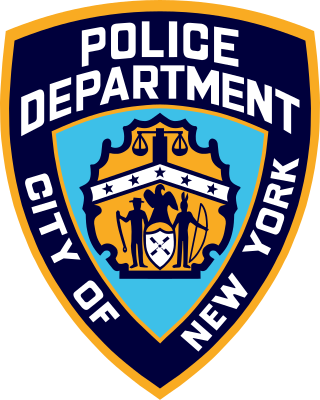
The New York City Police Department (NYPD), officially the City of New York Police Department, is the primary law enforcement agency within New York City. Established on May 23, 1845, the NYPD is the largest, and one of the oldest, municipal police departments in the United States.
CompStat—or COMPSTAT, short for Compare Stats— is a police management system created by the New York City Police Department in 1994 with assistance from the New York City Police Foundation. Under CompStat, the department keeps a daily-updated digital record of crimes reported and in weekly meetings the department's leadership gathers to review trends in the data. It was credited with decreased crime rates in NYC during its early years, though scholarship is divided on whether it played a role. It has been criticized for leading to data manipulation and increased stop-and-frisk searches. Variations of the program have been used in police departments worldwide.
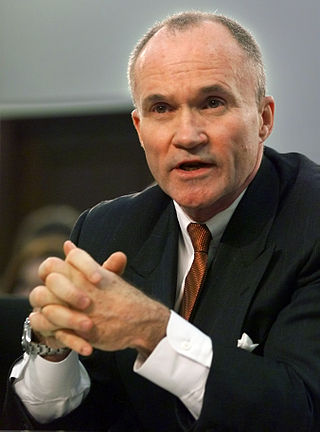
Raymond Walter Kelly is the longest-serving Commissioner in the history of the New York City Police Department (NYPD) and the first person to hold the post for two non-consecutive tenures. According to its website, Kelly, a lifelong New Yorker, had spent 45 years in the NYPD, serving in 25 different commands and as Police Commissioner from 1992 to 1994 and again from 2002 until 2013. Kelly was the first man to rise from Police Cadet to Police Commissioner, holding all of the department's ranks, except for Three-Star Bureau Chief, Chief of Department and Deputy Commissioner, having been promoted directly from Two-Star Chief to First Deputy Commissioner in 1990. After his handling of the World Trade Center bombing in 1993, he was mentioned for the first time as a possible candidate for FBI Director. After Kelly turned down the position, Louis Freeh was appointed.

The Metropolitan Transportation Authority Police Department (MTAPD) is the police agency of New York's Metropolitan Transportation Authority

The Police Benevolent Association of the City of New York (PBA) is the largest police union representing police officers of the New York City Police Department. It represents about 24,000 of the department's 36,000 officers.

The Lower Manhattan Security Initiative (LMSI) is a New York City Police Department initiative overseen by the Counterterrorism Bureau to increase surveillance efforts in Lower Manhattan, New York City, New York, United States. It is housed in the Lower Manhattan Security Coordination Center (LMSCC) located at 55 Broadway. The LMSI covers a 1.7-mile area from Canal Street to Battery Park, including the New York Stock Exchange, World Financial Center, former World Trade Center site, and numerous financial institutions.

The New York City Police Department (NYPD) is structured into numerous bureaus and units. As a whole, the NYPD is headed by the Police Commissioner, a civilian administrator appointed by the Mayor, with the senior sworn uniformed officer of the service titled "Chief of Department". The Police Commissioner appoints the First Deputy Commissioner as the department's second-in-command and the Chief of Department as the department's highest ranking uniformed officer. The commissioner also appoints a number of deputy and assistant commissioners who do not have operational command and are solely for support and administrative function. The department is divided into twenty bureaus, six of which are enforcement bureaus. Each enforcement bureau is further subdivided into sections, divisions, and units, and into patrol boroughs, precincts, and detective squads. Each bureau is commanded by a bureau chief. There are also a number of specialized units that are not part of any of the bureaus and report to the Chief of the Department.
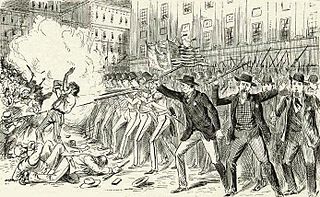
The New York City Police Department (NYPD) originates in the Government of New York City attempts to control rising crime in early- to mid-19th-century New York City. The City's reforms created a full-time professional police force modeled upon London's Metropolitan Police, itself only formed in 1829. Established in 1845, the Municipal Police replaced the inadequate night watch system which had been in place since the 17th century, when the city was founded by the Dutch as New Amsterdam.

Project Griffin was originally introduced by the City of London Police and Metropolitan Police in April 2004 to help "London's financial sector better protect itself against terrorist threats". It has since spread to businesses and security services as a way to get educated about counter-terrorism and crime prevention, be the 'eyes and ears' for the police and be prepared for major emergency. The goal of the program is to bring together the police, fire brigade, ambulance services, private security industry and other government agencies in deterring, disrupting and support operations targeting terrorist and extremist activity.
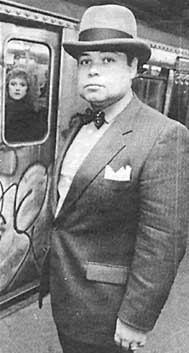
Jack Maple was a New York City deputy police commissioner for crime control strategies. He created the CompStat methodology of crime fighting and law enforcement strategy, co-authored the book The Crime Fighter, and inspired the television series The District.
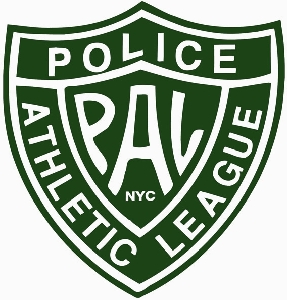
The Police Athletic League (PAL) is an independent, nonprofit youth development agency in New York City. PAL is funded by a combination of private donations and public funding sources and is a designated charity of the New York City Police Department (NYPD). Robert M. Morgenthau, the late former New York County District Attorney, served as Chairman of the Board of Directors beginning in 1963. PAL is open to all New York City children.
The stop-question-and-frisk program, or stop-and-frisk, in New York City, is a New York City Police Department (NYPD) practice of temporarily detaining, questioning, and at times searching civilians and suspects on the street for weapons and other contraband. This is what is known in other places in the United States as the Terry stop. The rules for the policy are contained in the state's criminal procedure law section 140.50 and based on the decision of the US Supreme Court in the case of Terry v. Ohio.

The Domain Awareness System is the largest digital surveillance system in the world as part of the Lower Manhattan Security Initiative in partnership between the New York Police Department and Microsoft to monitor New York City. It allows the NYPD to track surveillance targets and gain detailed information about them, and is overseen by the counterterrorism bureau.
Akai Gurley, a 28-year-old black man, was fatally shot on November 20, 2014, in Brooklyn, New York City, United States, by a New York City Police Department officer. Two police officers, patrolling stairwells in the New York City Housing Authority (NYCHA)'s Louis H. Pink Houses in East New York, Brooklyn, entered a pitch-dark, unlit stairwell. Officer Peter Liang, 27, had his firearm drawn. Gurley and his girlfriend entered the seventh-floor stairwell, fourteen steps below them. Liang fired his weapon; the shot ricocheted off a wall and fatally struck Gurley in the chest. A jury convicted Liang of manslaughter, which a court later reduced to criminally negligent homicide.
Brandon del Pozo, PhD, MPA, MA is an assistant professor of Medicine and Health Services, Policy, and Practice (Research) at the Warren Alpert Medical School of Brown University, and a research scientist at Rhode Island Hospital. He is also a faculty member of the Master of Science Program in Addiction Policy and Practice at the Georgetown University's Graduate School of Arts and Sciences.

The New York Police Department's Strategic Response Group (SRG) is a unit of the New York City Police Department (NYPD) formed in 2015 for counter-terrorism and the policing of political protests. They maintain a bike squadron and are outfitted with anti-riot gear, rifles, and body armor. The unit has been criticized for its use of excessive force and mass arrests against political demonstrators protected under the First Amendment, disproportionately high numbers of complaints to the Civilian Complaint Review Board, and the killing of unarmed men, among other things. Activists, the New York City Council, the New York City Department of Investigation, and organizations such as Human Rights Watch and the New York Civil Liberties Union, among others, have called for its regulation or disbandment.

Mitchell Darrow Silber is the executive director of the Community Security Initiative, a partnership between the UJA-Federation of New York (UJA) and the Jewish Community Relations Council of New York (JCRC-NY), funded by The Paul E. Singer Foundation, Carolyn and Marc Rowan, and several other foundations, to help secure local Jewish institutions in the New York region. He is a professional global political risk, intelligence and security analyst and the former director of intelligence analysis at the New York City Police Department (NYPD). He is a regular commentator on political risk and terrorism related issues for both print and broadcast news outlets.

The New York City Police Department Intelligence Bureau is a division of the New York City Police Department (NYPD) which claims responsibility for the detection and disruption of criminal and terrorist activity through the use of intelligence-led policing. There is limited oversight over the Intelligence Bureau, and it conducts work in secrecy without the city council being informed of operations.

The New York City Police Department Counterterrorism Bureau (CT) is a division of the New York City Police Department (NYPD) responsible for preventing terrorist attacks within New York City. Former New York City Police Commissioner Raymond Kelly described the CT as "a Council on Foreign Relations with guns".

Keechant L. Sewell is an American former police officer and administrator who served as the 45th New York City Police Commissioner, the first woman and third black person to serve in the position. On June 12, 2023, Sewell announced that she was stepping down as commissioner. No reason was given for her departure. On November 2, 2023, the New York Mets announced that Sewell would become their senior Vice President of security and guest experience.














